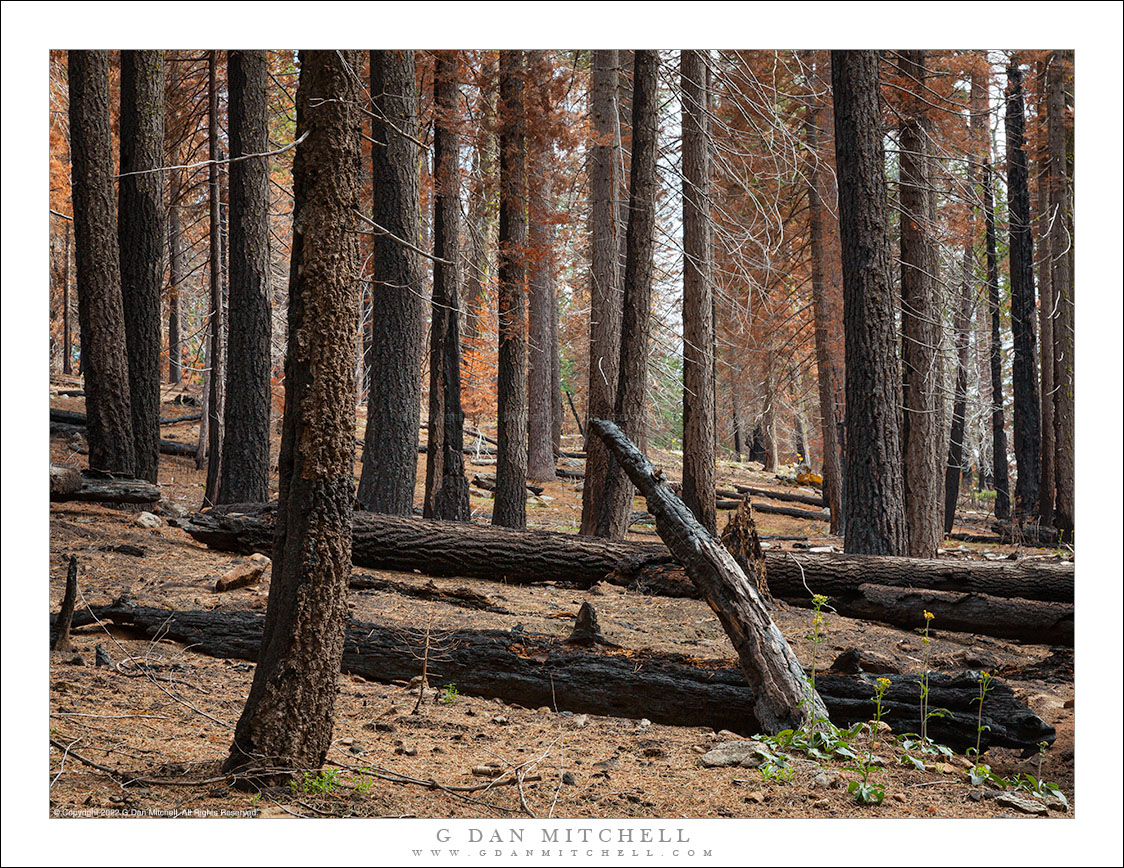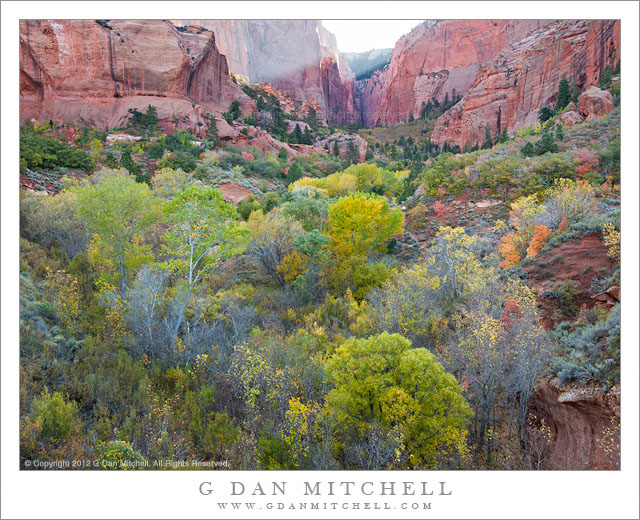
Burned Forest. © Copyright 2022 G Dan Mitchell.
A Yosemite National Park forest beginning its post-wildfire recovery..
This photograph comes from Yosemite National Park, and not far from the current wildfire in the Mariposa Grove area. There are “good fires” and “bad fires” — the former tend to burn loose stuff on the forest floor along with some small trees and other plants, while the later burn hot and climb into the crowns of the trees and often killing them. Most of the trees in a healthy forest will survive the good fires, but increasingly the forests are now faced with bad fires that cause tremendous destruction. A quick scan around this photograph reveals some dead young trees but also some remaining green branches that likely mark a tree that is going to survive.
Photographing wildfire sites has long been a challenge for me. Many years ago I simply regarded wildfires as evil, but today my view is more nuanced, and I accept that some fire occurs in healthy forests and, in fact, is necessary and good. The challenge photographically has been to see these scenes as being subjects for beautiful photography rather than just as destruction.
G Dan Mitchell is a California photographer and visual opportunist. His book, “California’s Fall Color: A Photographer’s Guide to Autumn in the Sierra” is available from Heyday Books, Amazon, and directly from G Dan Mitchell.
Blog | About | Twitter | Flickr | Facebook | Email
Links to Articles, Sales and Licensing, my Sierra Nevada Fall Color book, Contact Information.
Scroll down to leave a comment or question. (Click this post’s title first if you are viewing on the home page.)
All media © Copyright G Dan Mitchell and others as indicated. Any use requires advance permission from G Dan Mitchell.

